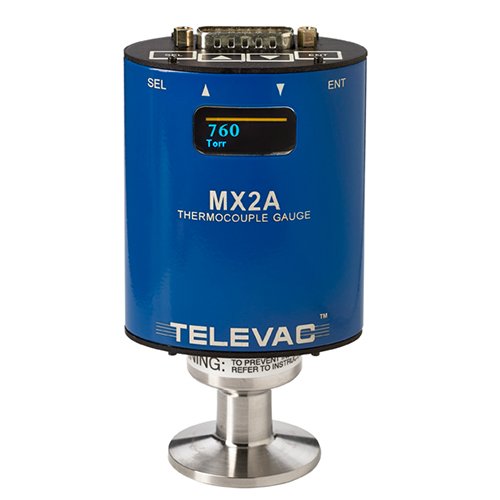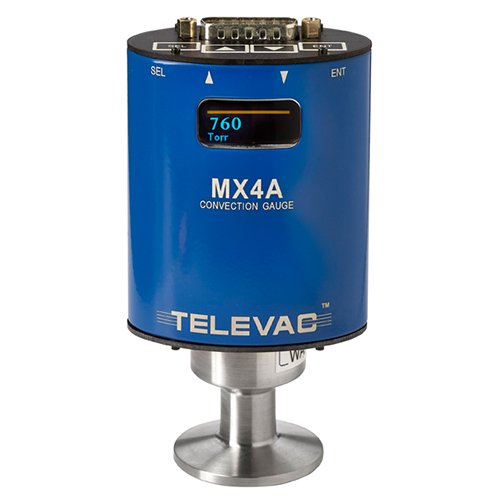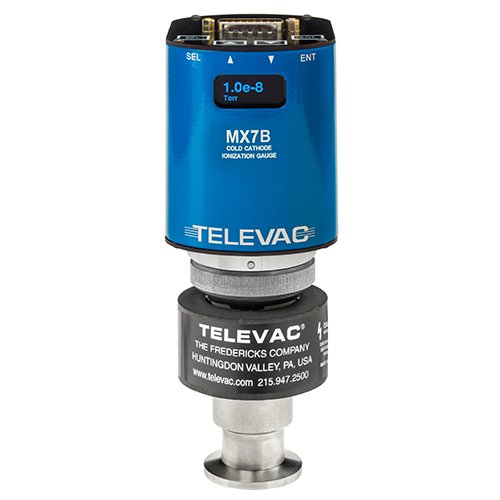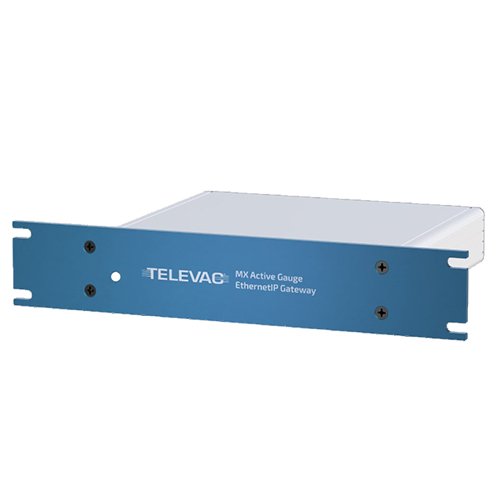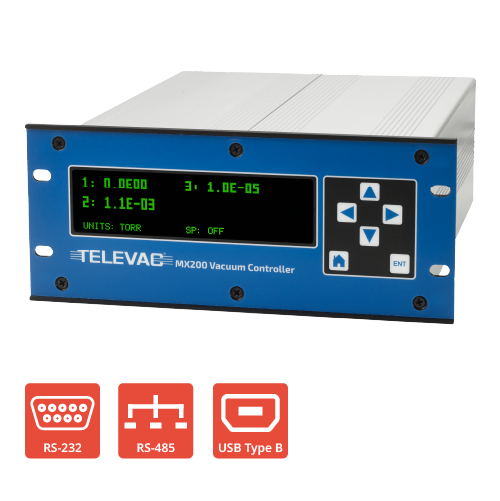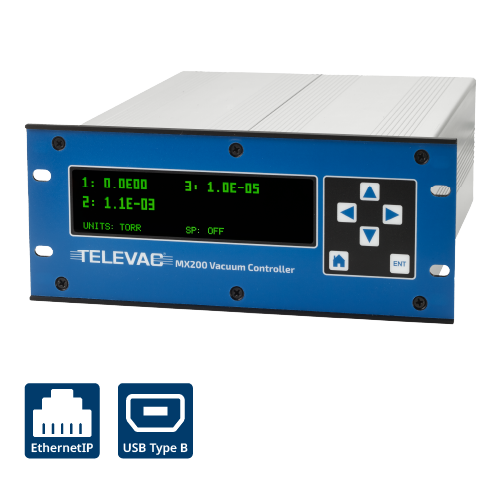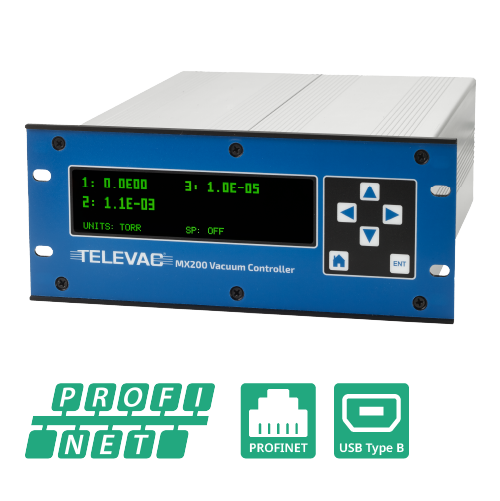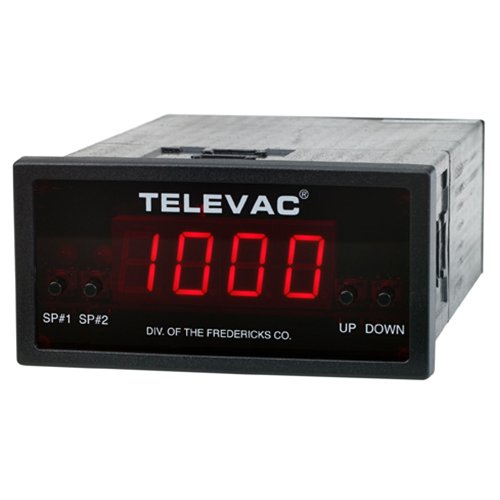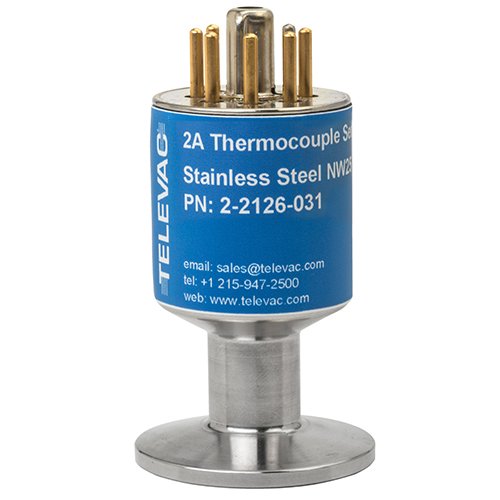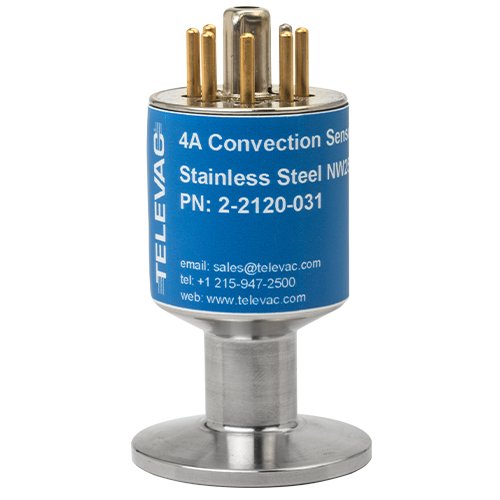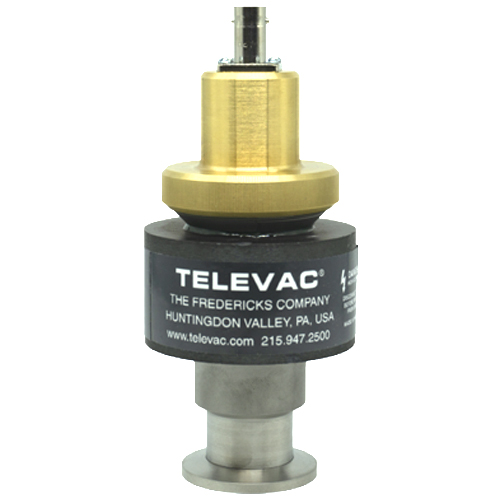E-beam welding is a process where a high energy beam of electrons from an electron gun is accelerated and focused using electric and magnetic fields, and shot at two materials to join them. The kinetic energy of the electrons creates very high heat which melts the two materials together (electrons are particles with a very small mass, 9*10-31 kg or 2*10-30 lbs to be exact). The electron beam requires that the system be under vacuum to maintain the speed and focus of the electrons thus preventing beam dissipation or scattering (without vacuum, the electrons would run into other molecules in the atmosphere like nitrogen, oxygen, and water vapor, among others). This is where Televac® vacuum gauging comes in, to make sure that the system is under sufficient vacuum to operate correctly.
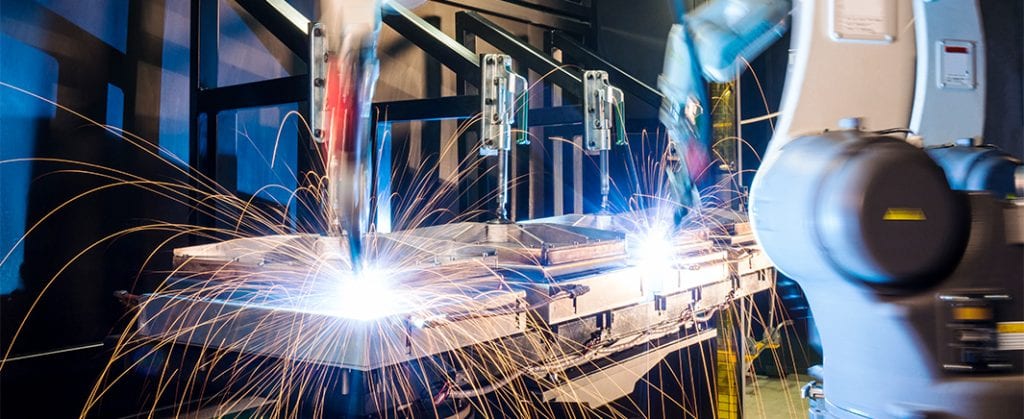
Ci sono due specifiche AMS rilevanti quando si tratta di saldatura E-Beam, AMS 2680 e AMS 2681. Esse richiedono due diversi livelli di vuoto di 1*10-4 Torr e 1*10-3 Torr rispettivamente. Si noti che questi sono per le specifiche aerospaziali. A seconda del livello di vuoto e dei requisiti di precisione del sistema, ci sono alcune opzioni per la misurazione del vuoto Televac, con importanti differenze indicate di seguito.
The first option is an active gauge solution. With an active gauge, the control electronics are attached directly to the physical sensor, then there are optional outputs to show the vacuum level including an analog 0 to 10 V output, RS-485 communications, EthernetIP, or PROFINET communications. The active gauges that would be used for E-Beam welding are an MX2A or MX4A (thermocouple vacuum gauges) for measurement from 1000 Torr down to 1*10-3 Torr and then an MX7B (cold cathode vacuum gauge) for measurement from 1*10-3 Torr and deeper vacuum (as low as 1*10-8 Torr).
La seconda opzione consiste nel separare l'elettronica di controllo dal sensore fisico. Questo può essere l'ideale se avete bisogno o volete un display remoto da qualche altra parte sulla vostra saldatrice E-Beam. Le soluzioni ideali per questo sono il sensore MV2A e 2A se avete bisogno solo di misure fino a 1*10-3 Torr, o l'MX200 con un 2A/4A(sempre per misure di vuoto grezzo fino a 1*10-3 Torr) combinato con un 7B per misure di medio e alto vuoto (fino a 1*10-7 Torr). A seconda del controllore scelto(MV2A o MX200), si avranno uscite opzionali di un segnale analogico da 0 a 5 V, un segnale analogico da 0 a 10 V, comunicazioni RS-232, comunicazioni RS-485 o comunicazioni EthernetIP.
Siete confusi sulle unità? Non siate confusi! Ecco alcune semplici conversioni da Torr ad altre unità di misura comuni (per altre conversioni, consultate il nostro convertitore di unità):
1 Torr = 1,33 mbar
1 Torr = 1 mm Hg
1 Torr = 1,33 * 10-1 kPa
Non siete sicuri di quale prodotto scegliere? Chattate con noi utilizzando la finestra in basso a destra di questo schermo, chiamateci al numero +1 215 947 2500 o inviateci un'e-mail a sales@frederickscompany.com!
Si noti che la saldatura E-Beam può essere effettuata anche in atmosfera. Poiché il fascio si disperde colpendo le diverse molecole / gas nell'atmosfera, le saldature sono tipicamente più ampie, il che può non essere adatto per alcune applicazioni.
Active Vacuum Gauge Solutions
MX2A Thermocouple (Pirani)
1*10-4 Torr to 1000 Torr
MX4A Convection (Pirani)
1*10-4 Torr to 1000 Torr
MX7B Cold Cathode
1*10-8 Torr to 1*10-3 Torr
MX Active Gauge EthernetIP Gateway
5*10-11 Torr to 10,000 Torr
Vacuum Controller Solutions
MX200
1*10-11 Torr to 10,000 Torr
MX200 EthernetIP
1*10-11 Torr to 10,000 Torr
MX200 PROFINET
1*10-11 Torr to 10,000 Torr
MV2A
1*10-3 Torr to 20 Torr
2A Thermocouple (Pirani)
1*10-3 Torr to 20 Torr
4A Convection (Pirani)
1*10-4 Torr to 1000 Torr
7B Penning Magnetron Cold Cathode
1*10-7 Torr to 1*10-3 Torr






